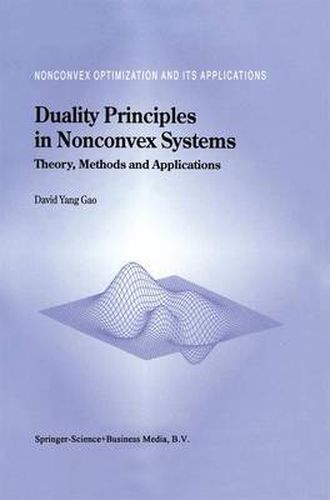Readings Newsletter
Become a Readings Member to make your shopping experience even easier.
Sign in or sign up for free!
You’re not far away from qualifying for FREE standard shipping within Australia
You’ve qualified for FREE standard shipping within Australia
The cart is loading…






This title is printed to order. This book may have been self-published. If so, we cannot guarantee the quality of the content. In the main most books will have gone through the editing process however some may not. We therefore suggest that you be aware of this before ordering this book. If in doubt check either the author or publisher’s details as we are unable to accept any returns unless they are faulty. Please contact us if you have any questions.
Motivated by practical problems in engineering and physics, drawing on a wide range of applied mathematical disciplines, this book is the first to provide, within a unified framework, a self-contained comprehensive mathematical theory of duality for general non-convex, non-smooth systems, with emphasis on methods and applications in engineering mechanics. Topics covered include the classical (minimax) mono-duality of convex static equilibria, the beautiful bi-duality in dynamical systems, the interesting tri-duality in non-convex problems and the complicated multi-duality in general canonical systems. A potentially powerful sequential canonical dual transformation method for solving fully nonlinear problems is developed heuristically and illustrated by use of many interesting examples as well as extensive applications in a wide variety of nonlinear systems, including differential equations, variational problems and inequalities, constrained global optimization, multi-well phase transitions, non-smooth post-bifurcation, large deformation mechanics, structural limit analysis, differential geometry and non-convex dynamical systems. With exceptionally coherent and lucid exposition, the work fills a big gap between the mathematical and engineering sciences. It shows how to use formal language and duality methods to model natural phenomena, to construct intrinsic frameworks in different fields and to provide ideas, concepts and powerful methods for solving non-convex, non-smooth problems arising naturally in engineering and science. Much of the book contains material that is new, both in its manner of presentation and in its research development. A self-contained appendix provides some necessary background from elementary functional analysis. Audience: The book will be a valuable resource for students and researchers in applied mathematics, physics, mechanics and engineering. The whole volume or selected chapters can also be recommended as a text for both senior undergraduate and graduate courses in applied mathematics, mechanics, general engineering science and other areas in which the notions of optimization and variational methods are employed.
$9.00 standard shipping within Australia
FREE standard shipping within Australia for orders over $100.00
Express & International shipping calculated at checkout
This title is printed to order. This book may have been self-published. If so, we cannot guarantee the quality of the content. In the main most books will have gone through the editing process however some may not. We therefore suggest that you be aware of this before ordering this book. If in doubt check either the author or publisher’s details as we are unable to accept any returns unless they are faulty. Please contact us if you have any questions.
Motivated by practical problems in engineering and physics, drawing on a wide range of applied mathematical disciplines, this book is the first to provide, within a unified framework, a self-contained comprehensive mathematical theory of duality for general non-convex, non-smooth systems, with emphasis on methods and applications in engineering mechanics. Topics covered include the classical (minimax) mono-duality of convex static equilibria, the beautiful bi-duality in dynamical systems, the interesting tri-duality in non-convex problems and the complicated multi-duality in general canonical systems. A potentially powerful sequential canonical dual transformation method for solving fully nonlinear problems is developed heuristically and illustrated by use of many interesting examples as well as extensive applications in a wide variety of nonlinear systems, including differential equations, variational problems and inequalities, constrained global optimization, multi-well phase transitions, non-smooth post-bifurcation, large deformation mechanics, structural limit analysis, differential geometry and non-convex dynamical systems. With exceptionally coherent and lucid exposition, the work fills a big gap between the mathematical and engineering sciences. It shows how to use formal language and duality methods to model natural phenomena, to construct intrinsic frameworks in different fields and to provide ideas, concepts and powerful methods for solving non-convex, non-smooth problems arising naturally in engineering and science. Much of the book contains material that is new, both in its manner of presentation and in its research development. A self-contained appendix provides some necessary background from elementary functional analysis. Audience: The book will be a valuable resource for students and researchers in applied mathematics, physics, mechanics and engineering. The whole volume or selected chapters can also be recommended as a text for both senior undergraduate and graduate courses in applied mathematics, mechanics, general engineering science and other areas in which the notions of optimization and variational methods are employed.